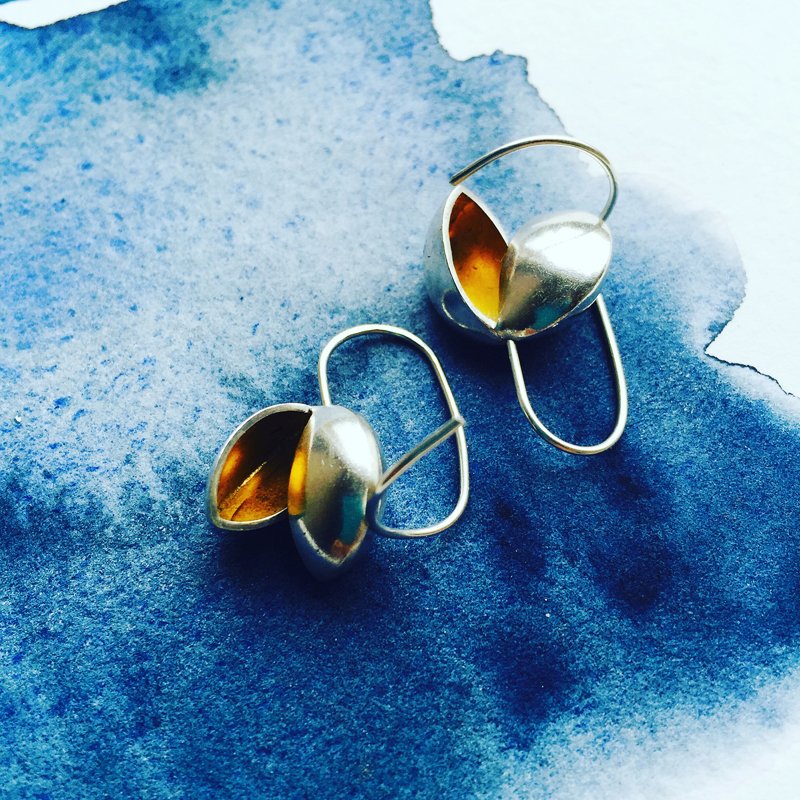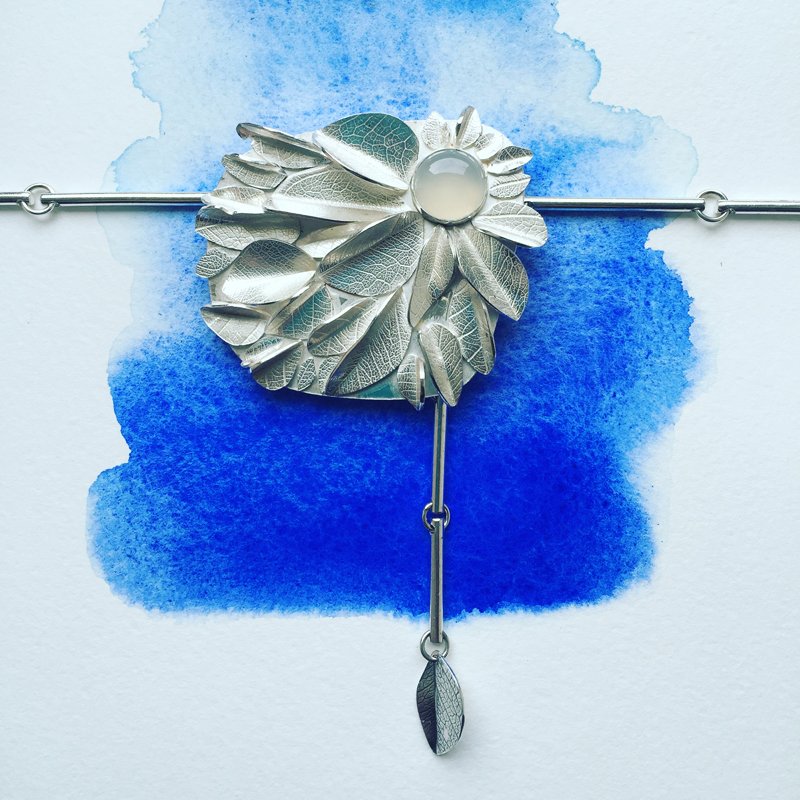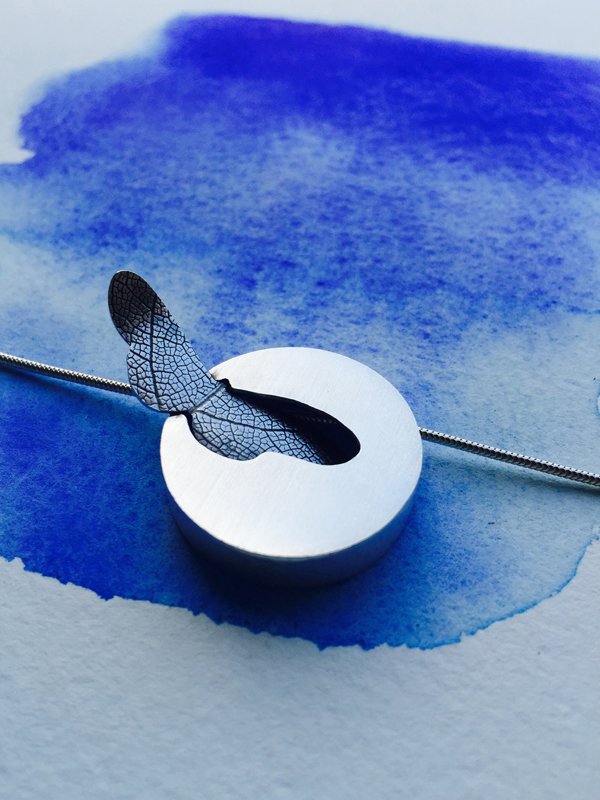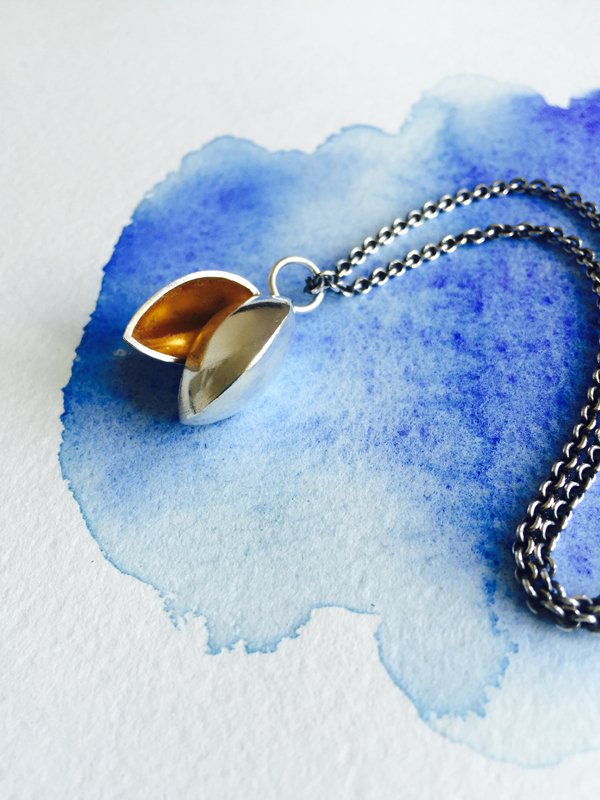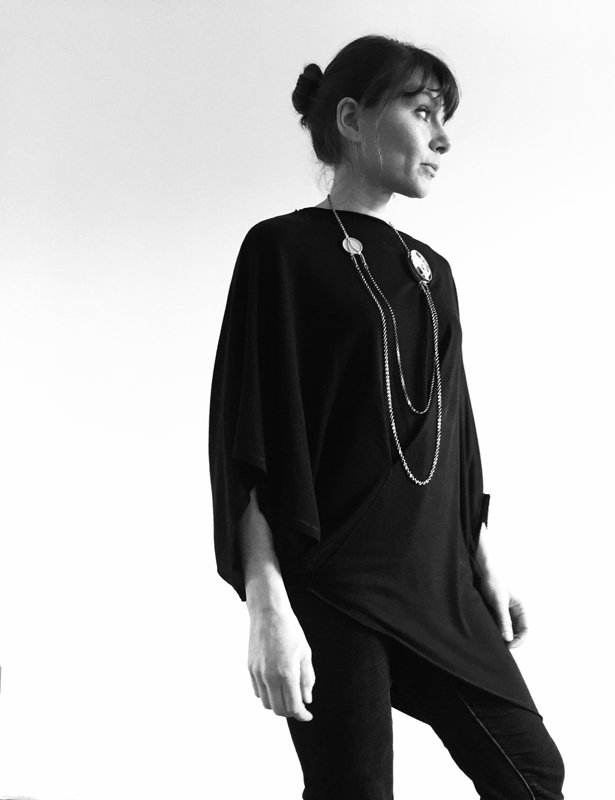
INTERVIEW WITH CARI-JANE HAKES
Cari-Jane Hakes creates tiny intricate treasures. Her design, goldsmithing and jewelery making skills bring precious wearable art to an expanding and discerning clientele.
My work as an artist draws upon my architectural design education. I studied architecture at Bath and Cambridge University, becoming fully qualified as a practicing architect in 2000. Consequently I describe myself as an ‘Architectural Goldsmith’. Personally I don’t see any difference in the skills I used to design buildings and the skills I use now in my work; the ‘buildings’ are just smaller and the building materials are perhaps a little more expensive per square metre.
For the past four years I have been living and working on the edge of the Yorkshire Wolds in a small village between York and Beverly, in the UK. Before moving to Yorkshire, I lived for four years in a tiny rural farming community in France and before that, ten years in the urban heart of London where my husband and I set up and ran our own architectural practice. My family is originally from Glasgow, Scotland but I have happily adopted Yorkshire as my home for now; having married a Yorkshire man, it is probably as far north as I’m going to get!
I did not study goldsmithing or jewelery design academically. My academic background comes from my studies in architectural design. After becoming qualified as an Architect, I did become a little frustrated with the pace of large architectural projects. Often projects will be stopped or the design will be radically re-drawn. I loved the physicality of actually making and this was a process I became more detached from in the architectural design studio. You create all the drawings and specifications for someone else to build your design.
Then I signed up for a beginners evening course in jewelery making at Morley College in London, which was just round the corner from our Architectural design studio. By the end of the first term I had a little workshop bench set up in the corner of our architecture studio so I could keep making and practicing in my spare time. When we moved to France I effectively became my own apprentice and put a good dent in that 10,000 hour body of practice that Malcolm Gladwell suggests you generally require to execute in order to master a new skill. I opened a shop on Etsy.com and just put in hour after hour at the workbench.
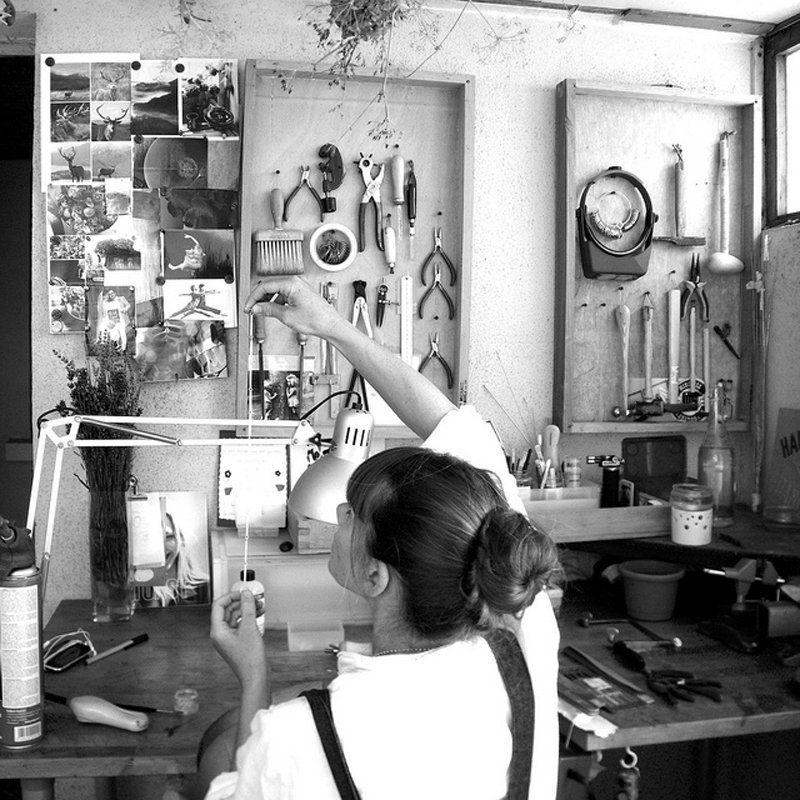
Most of my work is carried out on a commission basis. Clients will often approach me after seeing images of my work. We will then begin to design a new piece together, inspired by the piece they were initially attracted to. It is a real honor to be asked by someone to make these pieces. Often there are important personal reasons behind the commissioning of a piece of jewelery and that confers a certain weight of responsibility to me, as the maker. Sometimes the client will be give me something unique and of huge sentimental value to incorporate into the piece I’m making for them. On those occasions, I have to take a few deep breaths before taking the crucial fabricating steps that will join the old and the new pieces together. It is careful, delicate and meticulous work that takes all of my concentration and focus.
The first item of jewelery I ever made was a copper ring – a simple lesson set by my tutor to help us get to grips with basic hand tools and the skills needed to create the right conditions for making a soldered joint. It is amazing to look at that ring now and compare it, ten years on, to the piece I recently completed for the Mercer Art Gallery (of Harrogate in Yorkshire). This gallery piece involved hours of preparation and design. The fabrication of the elements really tested all my goldsmithing skills. It is a curious creation of lichen, gold leaf, silver and resin. It was a beautifully complex piece to work on.
My favorite piece, to date, is my most recent museum commission titled Into The Wild. I was asked to develop a new work that drew its inspiration from the existing museum collection. The concept for the piece took a while to develop but once that was established all the elements fell into place. Making each component progressed steadily and the moment when all the pieces came together was really exciting.
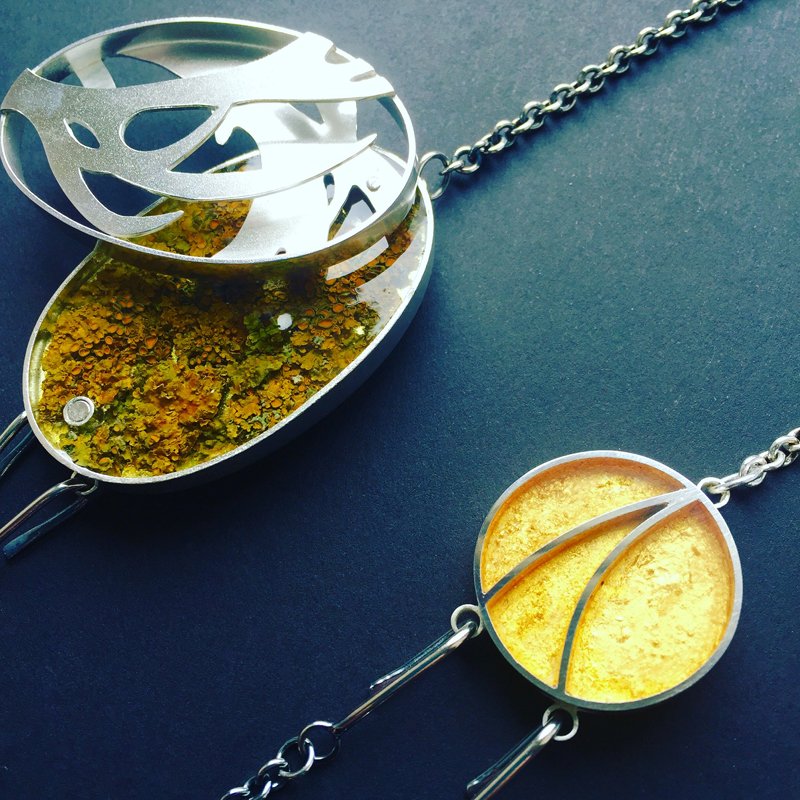
I work with silver, gold, pebbles, lichen, resin, wood, acrylic and anything else that looks like it could be incorporated into a wearable, transportable piece of body sculpture! I don’t tend to use any precious stones in my work because I don’t have any reliable personal links to places where these stones would come from. Much of the drama and spectacle that surrounds jewelery comes from the inclusion of such stones. Having this self-imposed restriction, I’ve looked elsewhere for ways to incorporate color. In addition, by designing surprising little details and mechanisms, I like to think my work more than compensates with intrigue what it may lack in ‘bling’!
My work in the studio is focused on tiny details and minuscule components. I find that this work can make me become a bit too self-absorbed. To balance this out, I have found it useful to engage in activities on a completely different scale. Running through big swathes of landscape is good, especially straight up the hills that rise almost directly from my studio’s back door. I also love getting involved with the community in my local church. Those two activities really expand my horizons both physically and metaphorically. I am also part of an adult dance troupe. I don’t have a team of people who I work with so the dancing and community work stop me becoming a creative ‘hermit’.
In terms of the design process, I tend to get kick-started after becoming completely fascinated or obsessed by a particular natural phenomena (murmurating starlings, lichen, seed heads, etc.,) or a piece of literature (and then the challenge becomes how to represent this in 3D) or an architectural detail. In terms of the flow of creativity, I really find that my main problem is a lack of time. I have so many ideas scribbled down that I have yet to make. I don’t mean this in a boastful way. I am at a point in my life where the structure of my day is such that I do not have the luxury of time and so there never seems to be a chance for the flow to ebb – it just gets truncated, stopped, and then has to be picked up the next day. My days are full to bursting with all the responsibility of looking after my two sons and running my business.
When I am preparing to make a piece I will be thinking about the process of making the sketch into a physical reality. I will think through each step and sketch out quick little construction diagrams to test different configurations. I will use my sketchbook as a laboratory, make a maquette (a small scale model) from cardboard and copper before using my saw to bite into sheets of precious metal. Once I actually start making the piece I may very well revise and adapt it. At the same time, I am constantly keeping an eye on the economy of the piece by trying to waste as little as I can; for example, I catch all the silver and gold dust that drops down into my lap when I’m sawing through a sheet – this will all get recycled, it’s too precious to waste.
The biggest challenge I face as a goldsmith at the moment is carving out time to learn about new tools and new techniques. In the past I’ve taken week-long intensive summer school courses at St Martin’s College in London and West Dean College near Chichester; these have always ignited a barrage of new possibilities and opportunities.
I’ve had so much great feedback about my work, lots of lovely 5-star reviews. Recently, I’ve developed a range of jewelery for notonthehighstreet.com which has exposed my work to a much bigger audience. With that much larger audience it was inevitable that I would encounter some negative feedback. The first time it happened I took it really personally but now I make it my mission to deal with whatever issue the client has and turn it around so that they leave with a positive experience. Consequently, I’ve come away with a greater understanding of these situations from the client’s point of view and I use their suggestions to improve my pieces. I know other maker/designers who really resent this kind of feedback and complain really bitterly about it. Generally, I have found that a discussion can be started out of the initial criticism which can then throw up improvements that I wouldn’t have necessarily come up with on my own. Often the criticism has to do with the fact they are buying online. People imagine the piece is going to be bigger, or smaller, than what they imagined from the photographs. The simple solution to this was to include more photos of the pieces actually worn on a model and also photographing the piece with objects of identifiable scale. On another occasion, a client really didn’t like the packaging I sent a set of cufflinks in. What I thought was contemporary and modern did not appeal to her and so I simply researched an alternative and sent her an additional box. The problem was easily solved and the situation did make me reassess my choice of packaging for that product.
Success when I graduated and qualified as an architect centered around having our work published in the professional journals, winning a RIBA award for our first completed building in the UK, and competing in international design competitions. Setting up a small online Etsy shop back in 2010 was a million miles from that professional architectural world and it has been really hard to find my way in a new, unfamiliar industry. The turning point for me was when my work was picked up by notonthehighstreet.com. Back in 2010, I thought I would be able to call myself a success if I could be a goldsmith and make enough money to pay for the weekly shop to support my family. Now I am able to do that and have a bit left over to invest in new tools and machinery. Everything else beyond this point is a bonus.
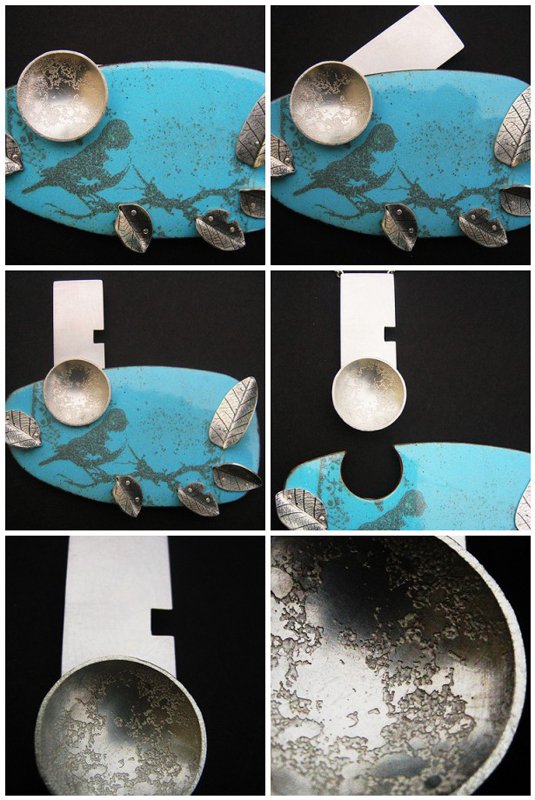
My motivation for becoming an architect and then a goldsmith was never to leave any kind of legacy for a future generation. The pieces I make now, only have a future and a ‘life’ the moment they become owned. I imagine them being taken on adventures and perhaps having stories associated with them and connections with important occasions in the owner’s life. In that sense, they really belong to someone else’s legacy – if that means they are handed down then that would at least prove that they had been built well and I will have done my work well.

